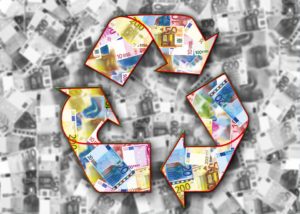These series of articles are for those intelligent group of people whose experties are not economics or finance, but are still interested to understand the impact of macroeconomic monetary and fiscal policies such as interest rates, taxes or spending on the overall course of economy, their businesses, their employers, investments and of course their daily life.Therefore, in these articles, I have knowingly avoided using economic and finance terms and jargon, as much as possible.
The impact of different macroeconomics monetary and fiscal policies on each other, economy and growth are complicated and may cause vicious, benign or virtuous cycles. It is like a polynomial equation with many different interactive factors and coefficients. Changing the value of each factor and each coefficient will not only generate a different result, but may even change the value of some other factors in that same equation! And of course, changing one factor may generate multiple or totally different results for different values of another factor.
Knowing all those facts, in this article, discussion is kept very simple and to the point. At any time, we focus on one causal impact of one factor only if ALL other factors are assumed to remain constant.
Part 1- Inflation, Interest Rates, Spendings, and Savings:
a- Mr. Max can borrow $100 at a 1% rate. This means that, Mr. Max should finally return $101 to his lender, or in other words pay $1 of interest to the lender. So for Mr. Max the cost of every $100, is $1.
Mrs. Ruby can borrow $100 at a 10% rate. This means that for Mrs. Ruby the cost of every $100, is $10. Obviously Mr. Max can spend much more money than Mrs. Ruby. This means that Mr. Max will be able to pay extra for goods and services, which means that in a low interest rate environment, money is abundant, spending is high, and prices will increase or inflate. To tame higher future prices (or inflation), interest rates should increase as inflation increases, to limit the amount of money.
To make this clearer, answer this simple question: if you have two credit cards, one with 20% rate, and one with 5% rate, which one would you prefer to use? If the rates of your credit cards goes up by another 5%, will you still spend as much as you do today?
b- Now, if Mr. and Mrs. Granny depend on their banks savings for a living, and prices are expected to go higher by 1% in a year, a bank interest rate of 1% on their savings will enable them afford their current lifestyle in one year from today. But of course, if prices are expected to go higher by 10%, a higher interest rate of 10% is needed to ensure their affordability remains unchanged. So, higher interest rates are essential if inflation is high, to match rates on people’s savings.
c- It also means that if Mr. Max saves his $100 in the bank, where the interest rates are 1% he will receive only $1 after one year. But if Mrs. Ruby saves her $100 in the bank, with 10% interest rate, she will receive $10 after one year. So, Mrs. Ruby will be more likely to save than spend, while Mr. Max is more likely to spend than save. So, higher interest rates increase savings and decrease spending and vice versa. For further clarification answer this question: bank ABC offers 1% of interest rate on saving accounts, and offers credit card ABC with 1% of rate. But bank XYZ offers 10% of interest rate on saving accounts, and offers credit card XYZ again with 10% of rate? -If you are a client of bank ABC do you prefer to save, or spend? – If you are a client of bank XYZ do you prefer to save or spend?
Summary:
Low interest rates, decrease the cost of borrowing, hence increase the supply of money, and inflate prices. To tame inflation, interest rates should increase, as inflation increases.
Higher interest rates encourage saving, and discourage spending.

